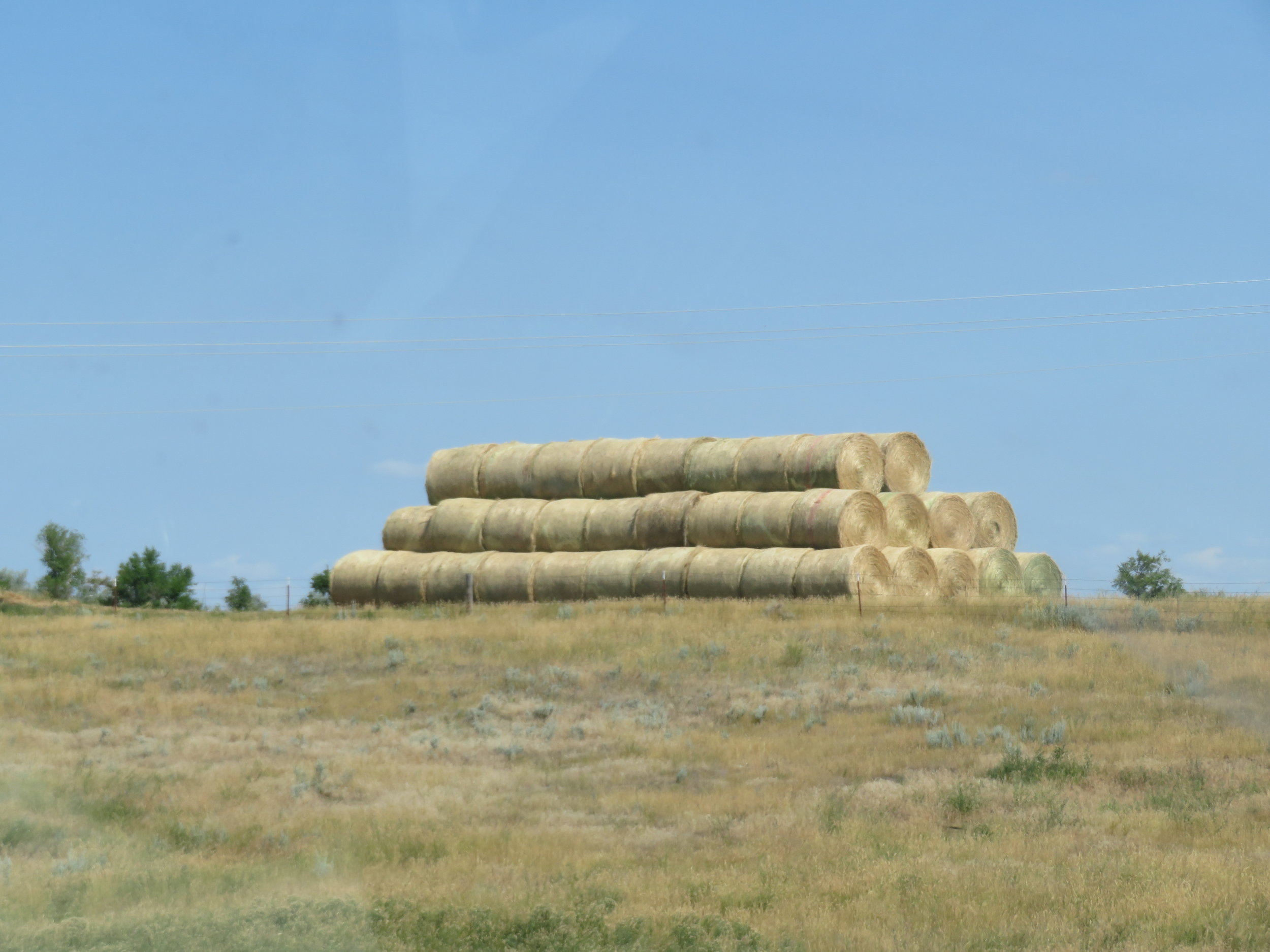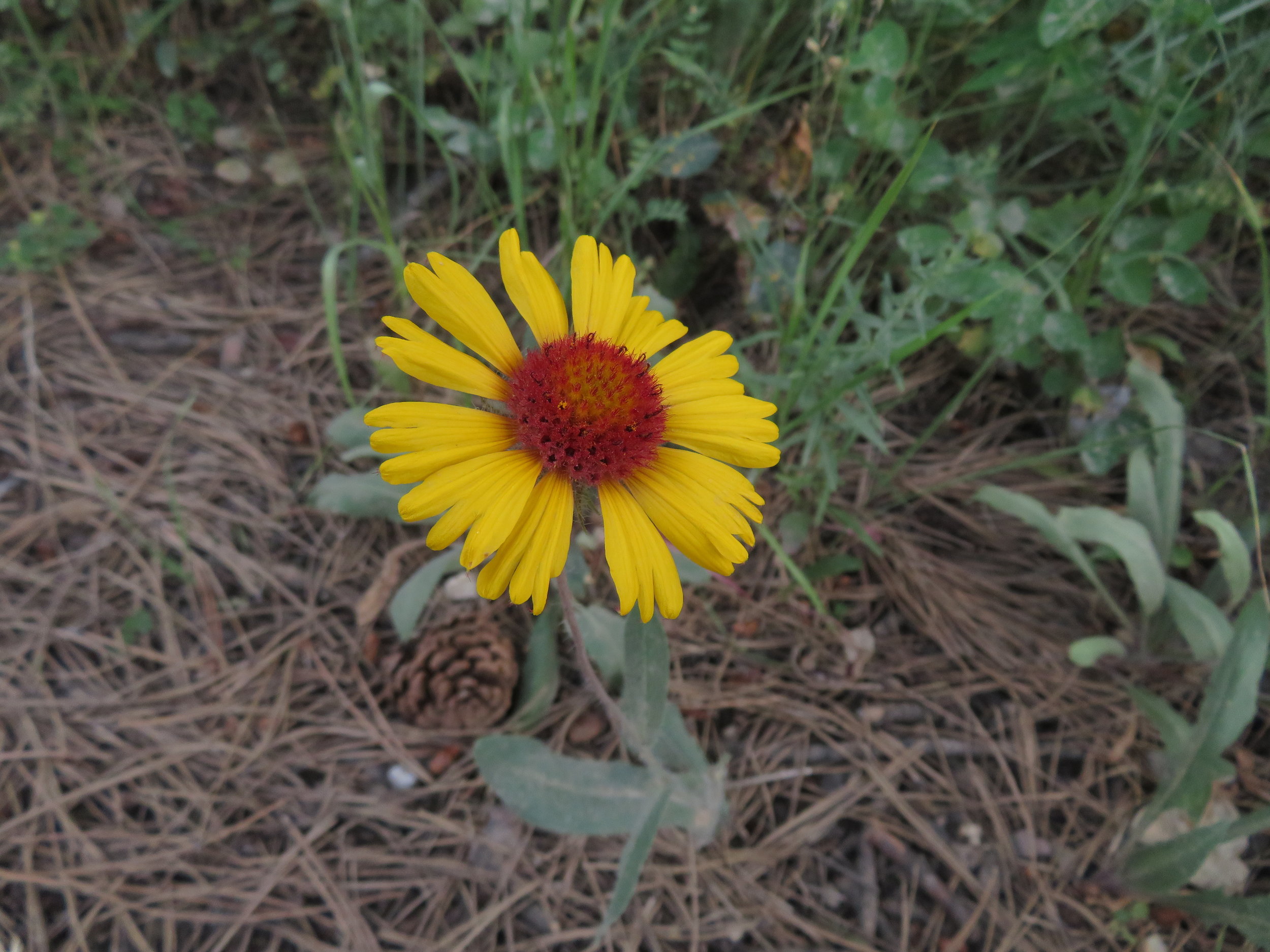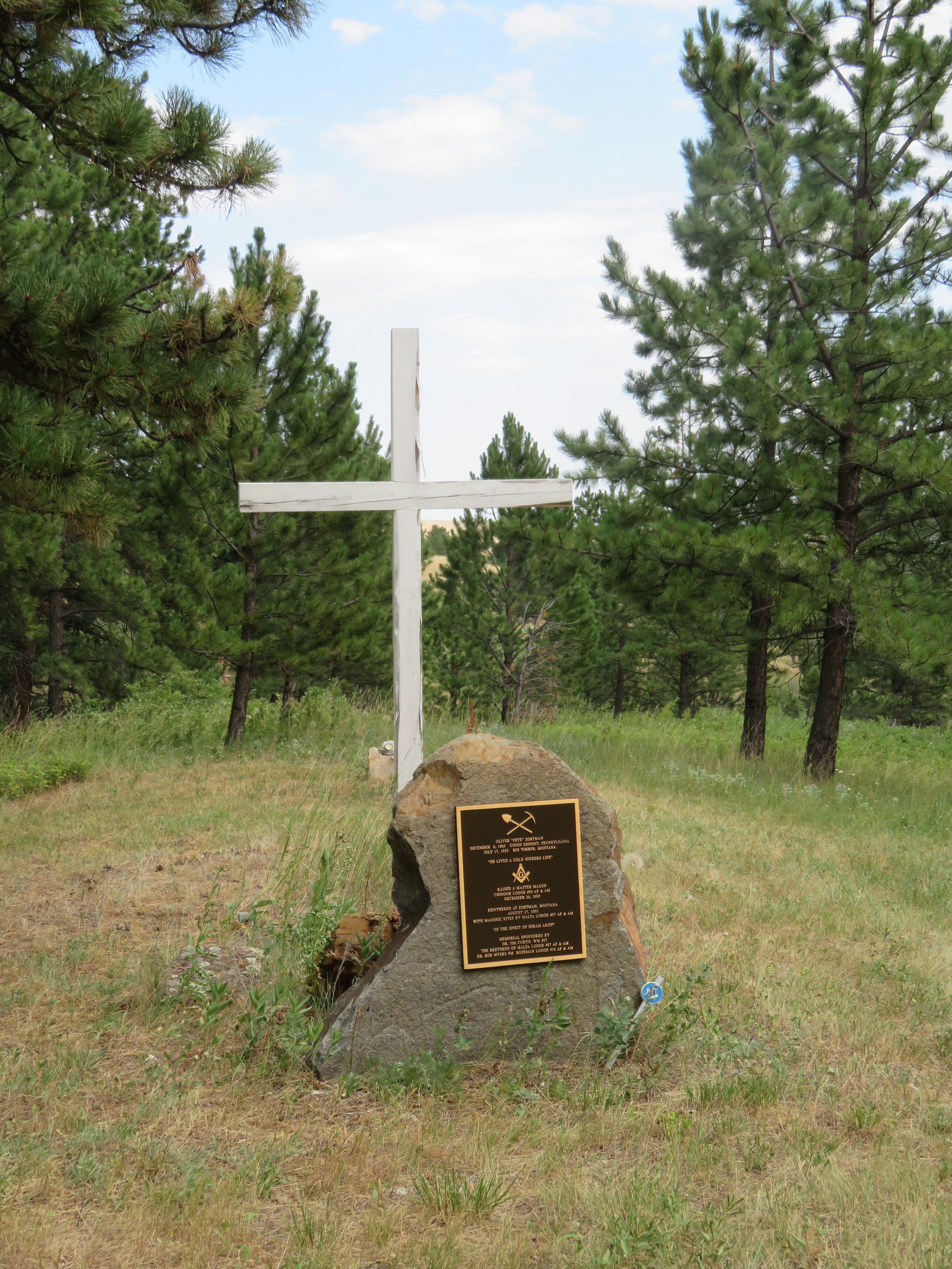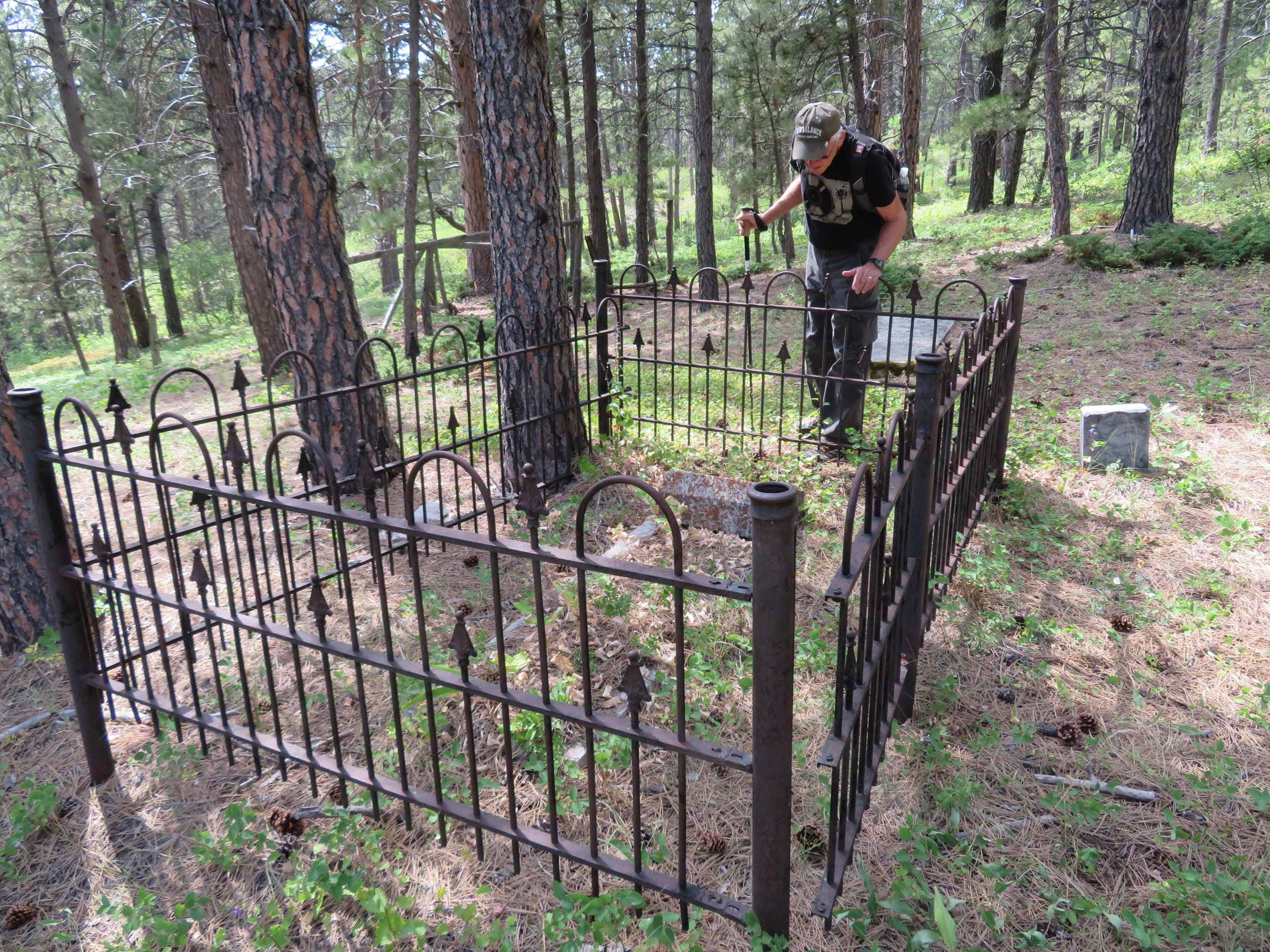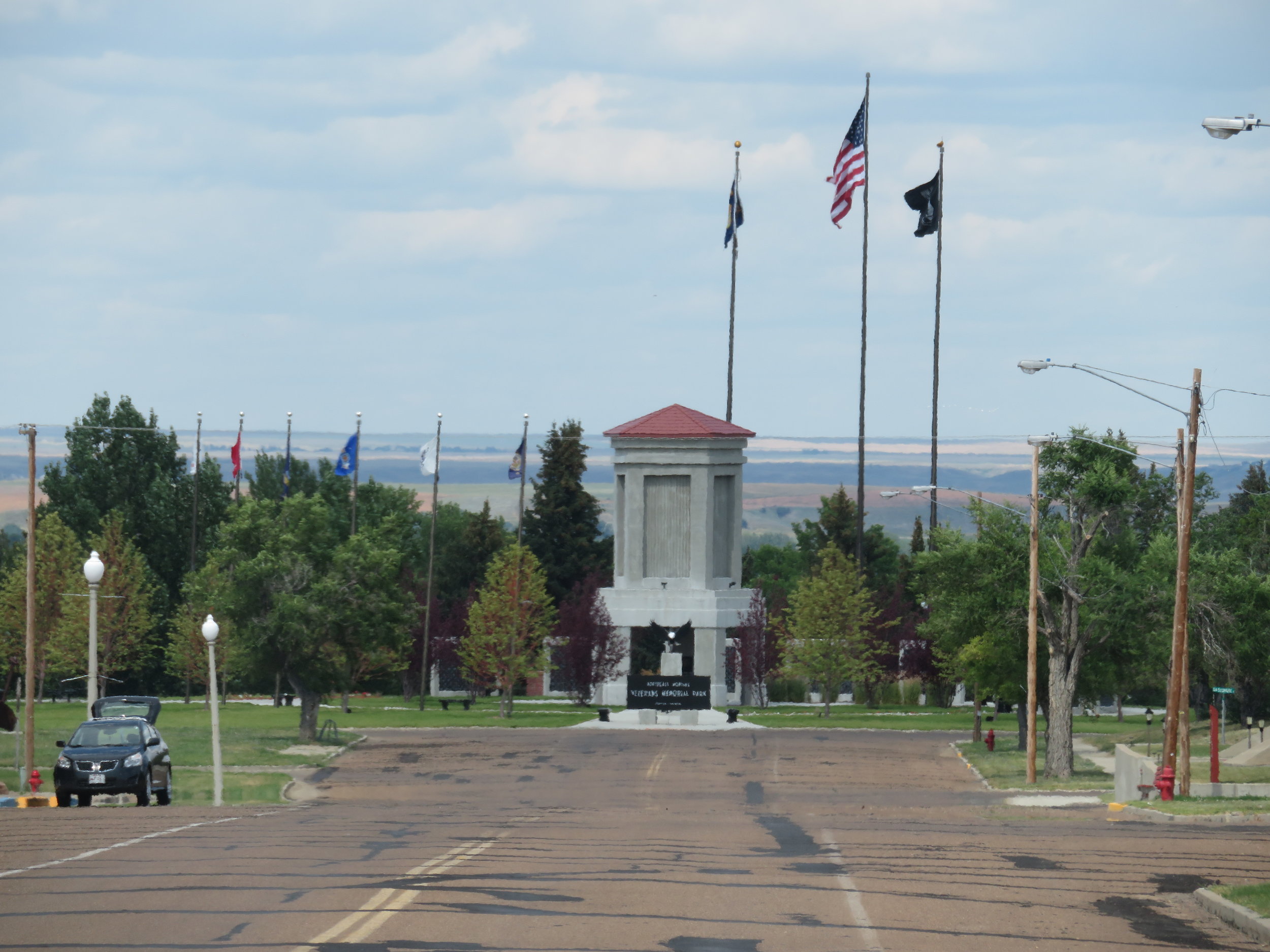TTH – Ghost Towns, Forts and a Big Dam
/Camping in a ghost town - 1,305 miles traveled
TTH in the blog title? That’s short for Tall Timber-Hobo Loop … just in case you forgot. We tend to name our trips so we can better remember what we actually did while traveling. We rarely remember the day of the week or the month … or sometimes the year … so any hint helps! Back to our journey ...
Lots of hay in Montana
We traveled for hours along US-87, then MT-19, then US-191 in Montana … the route numbers changed, but the terrain did not. This was new territory for us … vast expanses of green, gold and dun-colored rolling hills and fields. Stands of cottonwoods lined the streams; here and there were pines. We are beginning to cross the ‘Great Plains’, glacially modified flatlands interrupted by buttes, eroded over the eons. Every once in awhile we’d see a huge boulder in the middle of a field which was obviously too large or too costly to remove, so they farmed around it. Cattle and horses tread on well-worn paths, finding shade or greener pastures.
Ranches all have corrals and big barns and silos. Huge rolls of hay lay in the fields that look recently cut. The stacked round bales are a common sight and we wondered how they tote these big bales around and stack them up. We soon found out. The hay looks as if it has been rolled up like a carpet … what, do you suppose, those humongous hay rolls are called? Ah, yes … hay rolls. Hmmm … I was hoping for something a bit more agriculturally exotic like a toto faeneum rotundo or something.
We had planned to go further, but I saw a little icon on our Montana road map for a ‘ghost town’ with a campsite nearby. This deserved investigation and we followed the narrow road to the 19th century mining town of Zortman and the Camp Creek Campground. The campground was wonderful, mostly because we were the only people there. It was just the tiniest bit disconcerting … a little eerie … to be in the middle of nowhere with no one else around.
The ghost town, an old gold mining town founded by Pete Zortman, had been ‘spirited away’, it seems … at least we saw few signs of it. The area was networked with old, infrequently used gravel cart roads. We’d noticed a small sign for the Zortman Cemetery on our route in and decided to take a hike to explore. The gravel road was lined with so many wildflowers … I know, I know, I get carried away with the wildflowers, but when they’re so profuse, it’s hard to ignore them.
The cemetery was an interesting one. Oliver ‘Pete’ Zortman, who humbly named the town after himself, died and was buried in Big Timber. He had been re-interred here from Big Timber compliments of the local Masons. Yes, Pete was a Master Mason. Those Masons really do get around. His epitaph reads ‘He lived a gold seekers life.’
We wandered through a large, woodsy graveyard scattered with markers that dated from the late 19th century to, surprisingly, just a few years ago. We’d read one gravestone and then move to another nearby then spot another in the distance and walk over to it. When we arrived at that stone, we’d see another a ways away, overgrown with grass, but still discernible. It seems these folks like their own space.
On to Fort Peck
It was a peaceful, quiet night in Camp Creek Campground … no bears, no generators, no pit bulls. We slept like babes in the woods. It was hard to believe there was not another soul in this awesome campground. Morning coffee was leisurely … so unhurried, it seemed sinful. My kind of morning! Aspen leaves fluttered. Birds flitted from tree to tree in 100’ pines that towered over us and we just sat and took it all in. Life is good.
Today was a designated travel day for us en route to Fort Peck, Montana through little towns … railroad stops … with faraway names like Malta and Glasgow. An interesting story about Malta that David remembered. When the railroad was being built, stations needed to be named. After arguing about the name choices for one station, one of the railroad employees was reputedly blindfolded in front of a world map, spun around a few times and touched a spot on the map - Malta in the Med … hence the town’s name.
Tiny Fort Peck had a huge Veteran's Memorial.
We camped the night at Downstream Campground in Fort Peck. The little town of Fort Peck isn’t much itself … a post office with a little cafe attached which appeared close for business, an old hotel that has seen better days and a substantial war memorial.
The campground is located on the shores of the Missouri River. The grumpy camp hostess seemed aggravated that we’d arrived and wanted a site, but she managed to assign us one. The campground had hot showers (yahoo) and our assigned site was level, but unshaded and barren. Tolerable for one night.
Within walking distance of the campground, the Fort Peck Interpretive Center and Museum had a great dinosaur display where we learned that the first T-Rex found in the world was discovered in Montana in 1902 and the first dinosaur fossils identified in North America were also discovered right here in the 1840s. Montana boasts a Dinosaur Trail which encourages visitors to ‘uncover the state’s prehistoric past’ along a 1,300 mile route!
A 2.5 mile nature walk along the river and around several small fish ponds afforded us some steps to make amends for an otherwise sedentary day.
Power stations at Fort Peck Dam
Lest I forget to mention it, Fort Peck is primarily known for the Fort Peck Dam. According to Atlas Obscura ‘Fort Peck Dam was featured on the debut cover of Life magazine as FDR’s largest and perhaps most ambitious public works project, putting over 10,000 people to work in a state that, due to severe drought, began its Great Depression 10 years before the rest of the country. It is the largest manmade hydraulic dam in the world.’
A glorious sunrise on the Missouri River more than made up for the grumpy hostess.



